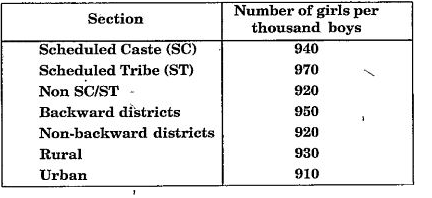Answer
Step by step text solution for The following data on the number of girls to the nearest ton per thousand boys in different sections of the society is given below: (i) Represent the information above by a bar graph. (ii) Write two conclusions you can arrive at from the graph, with justification. by MATHS experts to help you in doubts & scoring excellent marks in Class 9 exams.
|
Topper's Solved these Questions
STATISTICS
NAND LAL PUBLICATION|Exercise EXERCISE 14.4|6 VideosView PlaylistSTATISTICS
NAND LAL PUBLICATION|Exercise EXERCISE 14.2|9 VideosView PlaylistPOLYNOMIALS
NAND LAL PUBLICATION|Exercise EXERCISE 2.5|44 VideosView PlaylistSURFACE AREAS AND VOLUMES
NAND LAL PUBLICATION|Exercise Exercise 13.9|1 VideosView Playlist
Similar Questions
Explore conceptually related problems
